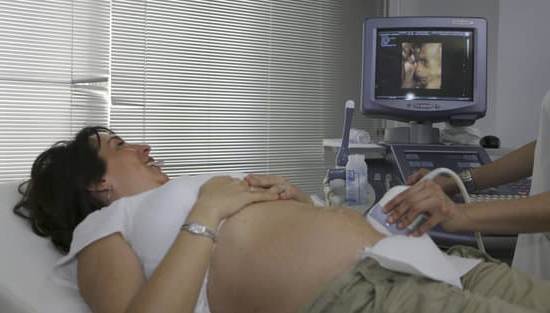How long is full term pregnancy? The average length of a full term pregnancy is 40 weeks. This timeline is crucial for the healthy development of the baby and the well-being of the mother. Understanding the full term pregnancy timeline, including the different stages and potential factors that can affect its length, is essential for expectant parents.
The 40-week gestation period is divided into three trimesters, each with its own set of developments and challenges. From conception to birth, the body undergoes significant changes to accommodate the growing baby. It is important for pregnant individuals to be aware of what to expect during each stage and how to manage any discomfort or complications that may arise.
Factors such as genetics, overall health, and lifestyle choices can influence the length of a full term pregnancy. Additionally, certain signs can indicate when labor is approaching, signaling the impending end of the 40-week milestone. It’s also important to be aware of the risks associated with preterm and post-term pregnancies, as well as how to manage these situations effectively.
In this article, we will explore in detail the different stages of pregnancy, factors that can affect its length, signs that labor is near, and tips for managing the last few weeks of full term pregnancy. Additionally, we will discuss the joy and excitement that comes with reaching full term pregnancy and preparing for the arrival of a new family member.
The Importance of the 40-Week Gestation Period
The 40-week gestation period is a crucial time for the development of the unborn child. This period, also known as a full-term pregnancy, allows the baby to fully develop and grow inside the mother’s womb. It is essential for ensuring the baby’s overall health at birth and reducing the risk of complications. Understanding the importance of this timeline can help expectant mothers take better care of themselves and their babies.
Growth and Development
During the 40 weeks of pregnancy, the baby goes through rapid growth and development. The first trimester is especially vital for the baby’s organ formation, while the second trimester sees intense growth in size and weight. In the third trimester, important developments continue to occur, such as brain maturation and lung development. The full 40 weeks allow for all these stages to happen naturally and ensure that the baby is born at an optimal time for survival.
Health Benefits
Babies born full term have lower risks of health complications compared to those born earlier or later than 40 weeks. They are less likely to have respiratory issues, feeding difficulties, or temperature regulation problems. Additionally, they are generally born at a healthier weight, which can lead to better long-term outcomes. For these reasons, medical professionals often encourage expectant mothers to aim for reaching full term pregnancy.
Maternal Well-Being
The 40-week gestation period also provides mothers with adequate time to prepare physically and emotionally for childbirth and motherhood. It allows them to experience gradual changes in their bodies as they adapt to each stage of pregnancy. Moreover, it gives them more time to make necessary arrangements before welcoming their newborn into the world. Overall, reaching full term pregnancy contributes to both maternal and infant well-being.
The Different Stages of Pregnancy
During pregnancy, a woman’s body goes through various stages as the baby grows and develops. The full term pregnancy timeline of 40 weeks is divided into three trimesters, each lasting about 3 months. Understanding the different stages of pregnancy can help expectant mothers know what to expect and how to best take care of themselves and their growing baby.
The first trimester is a crucial time for the baby’s growth and development. During this stage, the baby’s major organs and systems start to form. Many women also experience common symptoms such as morning sickness, fatigue, and breast tenderness during this trimester. It is important for pregnant women to focus on proper nutrition, prenatal care, and avoiding harmful substances like alcohol and tobacco during this period to support healthy fetal development.
The second trimester is often referred to as the “honeymoon period” of pregnancy. This is when many women start to feel better as common symptoms like nausea and fatigue subside. The baby’s movement can also be felt for the first time during this stage, bringing a sense of excitement and connection for expectant parents.
As the baby continues to grow, it is important for pregnant women to continue monitoring their health and attending regular prenatal check-ups. A balanced diet, regular exercise, and taking prenatal vitamins are all key components of maintaining a healthy pregnancy during this stage.
The third trimester brings significant changes as the baby rapidly grows in size and weight. Women may experience discomfort due to the physical strain of carrying a larger fetus, including backaches, shortness of breath, and difficulty sleeping.
It is essential for expectant mothers in their third trimester to closely monitor their health, watch for signs of labor approaching, and prepare for the arrival of their newborn. As they near the end of full term pregnancy, women should be aware of potential signs that labor is near and be ready for the imminent delivery.
| Pregnancy Stage | Description |
|---|---|
| First Trimester | Marks initial development of major organs in fetus; common symptoms include morning sickness and fatigue. |
| Second Trimester | Often referred to as “honeymoon period” with reduced symptoms; baby movement felt; focus on healthy habits. |
| Third Trimester | Rapid fetal growth leading to physical strain on mother; preparation for imminent delivery. |
Factors That Can Affect the Length of a Full Term Pregnancy
There are several factors that can affect the length of a full term pregnancy, which is typically considered to be 40 weeks. However, not all pregnancies last exactly 40 weeks, and certain factors can influence the duration of gestation. Some of these factors include:
- Maternal age: Women who are younger than 20 or older than 35 may have shorter or longer pregnancies.
- Health conditions: Pre-existing health conditions such as diabetes, high blood pressure, or obesity can impact the length of pregnancy.
- Multiple pregnancies: Carrying twins, triplets, or more can result in a shorter gestation period.
In addition to these factors, genetics, lifestyle choices, and even stress levels can also play a role in the length of a full term pregnancy. It is important for expectant mothers to work closely with their healthcare providers to understand how these factors might apply to their specific situation and what they can do to promote a healthy and timely birth.
Ultimately, while the average length of full term pregnancy is considered to be 40 weeks, it’s important for expectant parents to remember that every pregnancy is different. It is crucial to focus on maintaining overall health and well-being throughout the entire pregnancy journey.
Signs That Labor Is Near and the Impending End of Full Term Pregnancy
As the 40-week mark of pregnancy approaches, many women begin to look for signs that labor is near. It’s important to note that while the full term of pregnancy is typically around 40 weeks, it can vary from woman to woman. Some may give birth a few weeks before the due date, while others may go a little past it.
Here are some common signs that labor is near and the impending end of full term pregnancy:
- Braxton Hicks Contractions: These are often referred to as “practice contractions” and can be a sign that labor is approaching within the next few weeks.
- Nesting Instinct: Many women experience a sudden burst of energy and feel the need to clean and organize their homes in preparation for the baby’s arrival.
- Cervical Changes: As labor approaches, the cervix begins to soften, thin out (efface), and open (dilate) in preparation for childbirth.
It’s important to remember that not all women will experience these signs, and every pregnancy is different. Some may go into labor without experiencing any obvious signs beforehand, while others may notice several of these cues in the days leading up to delivery.
Ultimately, understanding these signs can help expectant mothers prepare for the arrival of their little one and make sure they’re ready when the time comes. And if unsure about any symptoms or changes experienced during this time period, it’s always best to consult with a healthcare provider for guidance on what to expect as your due date approaches.
The Risks of Preterm and Post-Term Pregnancies
A preterm pregnancy is one that lasts less than 37 weeks, while a post-term pregnancy extends beyond 42 weeks. Both of these scenarios come with their own set of risks for both the mother and the baby.
Risks of Preterm Pregnancy
Babies born before 37 weeks may face health issues because their organs have not fully developed. These issues can range from respiratory problems to long-term developmental challenges. In addition, preterm birth can lead to complications for the mother such as preeclampsia and postpartum depression.
Risks of Post-Term Pregnancy
On the other end of the spectrum, a post-term pregnancy increases the risk of stillbirth. This occurs when the placenta starts to deteriorate, leading to decreased oxygen and nutrient supply to the baby. Post-term babies are also at a higher risk of meconium aspiration, which can lead to breathing difficulties if they pass stool while still in the womb.
Both preterm and post-term pregnancies require close monitoring by healthcare providers to ensure the best possible outcome for both mother and child. It’s crucial for pregnant individuals to stay informed about these risks and work closely with their healthcare team to manage them effectively.
Tips for Managing the Last Few Weeks of Full Term Pregnancy
As a woman nears the end of her full term pregnancy, it is common to experience a mix of emotions ranging from excitement to impatience. Managing the last few weeks of pregnancy can be challenging, but there are some tips and guidelines that can help make this time more comfortable and manageable for expectant mothers.
One important tip for managing the last few weeks of full term pregnancy is to prioritize rest and relaxation. At this stage, the body is carrying extra weight and going through physical discomfort, so it is essential to listen to your body and get as much rest as possible. Taking naps, getting proper sleep at night, and practicing relaxation techniques such as deep breathing or prenatal yoga can help ease discomfort and prepare both the body and mind for childbirth.
It is also crucial for expectant mothers to stay well-hydrated and maintain a healthy diet during the final weeks of full term pregnancy. Proper nutrition and hydration are not only important for the mother’s health but also for the baby’s development leading up to delivery. Eating small, frequent meals throughout the day can help manage symptoms such as heartburn, indigestion, and nausea that may arise during this stage of pregnancy.
| Tips for Managing Last Few Weeks | Of Full Term Pregnancy |
|---|---|
| Prioritize rest and relaxation | Get adequate sleep, take naps, practice relaxation techniques like prenatal yoga |
| Maintain a healthy diet | Eat small, frequent meals; stay well-hydrated; prioritize proper nutrition |
The Joy of Reaching Full Term Pregnancy and the Excitement of Meeting the Baby
As the 40-week gestation period comes to an end, many expectant parents feel a sense of joy and excitement in reaching full term pregnancy. This period marks the final stretch before the much-anticipated meeting with their newborn baby. The journey from conception to full term pregnancy is filled with various milestones and stages, each significant in its own right.
Reaching full term pregnancy is a major achievement for both the mother and the baby. It indicates that the baby has completed its development and is ready to enter the world. As expectant parents eagerly wait for the arrival of their little one, they may experience a range of emotions, from nervousness to overwhelming joy. This moment signifies the end of a long but rewarding journey of pregnancy, and the beginning of a new chapter as parents.
However, it’s important for expectant mothers to remember that every pregnancy is different, and there is no exact science to predict exactly how long a full term pregnancy will last. While most pregnancies last around 40 weeks, some babies may arrive earlier or later than expected. Regardless of when labor begins, reaching full term pregnancy brings with it a sense of accomplishment and eagerness for what lies ahead – meeting their precious bundle of joy.
Frequently Asked Questions
Why Is 37 Weeks No Longer Considered Full Term?
37 weeks is no longer considered full term because recent research has shown that babies born at 37 weeks have a higher risk of complications compared to those born at 39 or 40 weeks. This has led to the redefinition of full term as being between 39 and 40 weeks.
Is Full Term 40 or 42 Weeks?
Full term is generally considered to be between 39 and 40 weeks. While some sources may still consider 37 weeks to be full term, the medical community now emphasizes the importance of allowing pregnancy to reach at least 39 weeks for optimal outcomes for both mother and baby.
Is It Safe to Deliver at 37 Weeks?
While it is generally safe to deliver at 37 weeks, it is not ideal unless there are specific medical reasons for early delivery. Babies born at this stage may still face an increased risk of complications, such as breathing problems and difficulty maintaining body temperature. Whenever possible, it is recommended to wait until at least 39 weeks for delivery.

Welcome to my fertility blog. This is a space where I will be sharing my experiences as I navigate through the world of fertility treatments, as well as provide information and resources about fertility and pregnancy.





